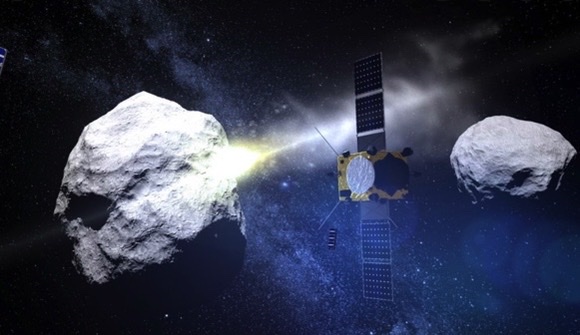NASA is preparing for an experimental mission with the aim of hitting an asteroid. The operation, the only one of its kind, is called DART - Double Asteroid Redirection Youst - and will use a space probe designed to crash into the flying celestial body at a speed of about 6,6 kilometers per hour.
The first planetary defense mission in the world will start on November 24 from California with the launch of a Space X - Falcon 9 rocket that will carry the DART probe: the impact is expected for September 2022.
The probe, in which there is also a piece of Italy, is currently in the launch base of Vandenberg, in California, ready to be launched on the ambitious mission of being able to deflect any dangerous asteroids en route to Earth.
Dart is a sort of heavy guided ball of 500 kilos whose objective will be to hit the asteroid at 24 thousand kilometers per hour (6.6 kilometers per second). Dimorphous, a rocky object about 160 meters in diameter that orbits a much larger asteroid, Didymus. Dimorphos does not actually pose any danger to our planet but was chosen as a target to test the ability to deflect a dangerous object en route to Earth. It is estimated that the impact of Dart will produce only a very small change in Dimorphos's trajectory, a very small change that however over time will turn into a major change.
On the scene there will be the Italian microsatellite LiciaCube, made entirely in the Argotec plants in Turin in collaboration with theItalian Space Agency (Asi). Ten days before the impact, scheduled for September 2022, the small Italian satellite will separate from Dart and will move on a slightly 'offset' trajectory compared to that of the mother vehicle to safely photograph all the moments of the collision and provide the data for a first feedback on the success of the mission. A few years after a second mission, Hera of the European Space Agency (ESA), will be launched in the direction of Didymos to accurately verify the displacement of Dimorphos 5 years after the impact of Dart. The mission will serve to validate this technique and implement it if necessary on any future dangerous asteroids.
